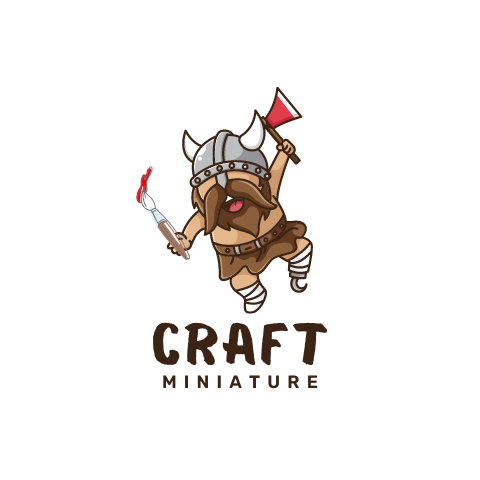When it comes to Warhammer, there are two main types of miniature models that players can choose from- plastic and resin. Here we will take a look at the differences between these two materials and why you might want to choose one over the other.
Resin models are made from a polyester resin mixed with a hardener. This mixture is then poured into a mold and left to cure. On the other hand, plastic models are made from a type of plastic known as Polystyrene. This material is heated until it becomes liquid before being injected into a mold. It is then cooled and solidified to create the desired shape.
This article will explore resin models’ benefits and drawbacks and the difference between resin and plastic models. We will tell you what you need to know to make an informed decision about the type of miniature model you want to use for your miniature collection.

The differences between resin and plastic models
Before making a purchase, you should know a few key differences between resin and plastic models.
- Resin models are made from a single piece, while plastic models are usually made up of multiple components that need to be assembled.
- Resin models can be more delicate than plastic models and require more care when handled.
- Resin models usually require less work to prepare for painting, while plastic models need to be primed before they can be painted.
- Resin models are typically more expensive than plastic models.
- Plastic models are usually easier to find than resin models, as they are mass-produced.
Resin Miniatures
What are resin miniatures?
Resin miniatures are solid, single-piece casting models that are made from a polyester resin. This resin is mixed with a hardener which makes it possible to pour the mixture into a mould. Once the resin has been poured into the mould, it is left to cure or harden.
Curing times can vary depending on the resin type, but it is usually a reasonably quick process. After the model has cured, it can be removed from the mould and any excess material trimmed away.
Why do manufacturers choose resin over plastic?
There are a few reasons why manufacturers might use resin instead of plastic.
- Resin models are more cost-effective for small to medium size production runs.
- Resin models provide highly intricate details to models that provide an enhanced look.
- Resin is a cheaper option compared to casting with metal.
- Resin is a more suitable material for larger models.
What are the drawbacks for resin model manufacturers?
- Resin is known to bubble during production and can lead to miscast models that cannot be recycled.
- Resin moulds do not last as long, meaning they are unsuitable for large production runs. More moulds in the production run represent more inconsistency between production runs.
- The raw materials for resin models are more expensive than plastic pellets. This means that the end product is more expensive, and mistakes will be more costly for the manufacturer.
What are the benefits of resin models to customers?
There are several benefits to choosing a resin model over a plastic one:
- Resin models are typically made with more intricate details than plastic models.
- Resin models are easier to work with than metal alternatives.
- As resin is excellent for large, more complex miniatures, customers benefit from unique designs that plastic cannot offer.
What are the drawbacks of using resin for models for customers?
- Resin models can be more difficult to paint due to the high level of detail in the finished model. Extra care is needed when painting these models.
- Resin models can be more delicate than plastic models, requiring more care when handling.
- Resin models are typically more expensive than plastic models.
- Plastic models are usually easier to find than resin models, as they are mass-produced.
Plastic Miniatures
What are plastic miniatures?
Plastic miniatures are made from a type of plastic known as Polystyrene. This plastic is heated until it becomes liquid and is injected into a mould. Once the plastic has cooled and solidified, it takes the desired shape.

Why do manufacturers choose plastic over resin?
- Plastic models are cheaper and easier to produce than resin models.
- Moulds for plastic models can be used multiple times, meaning they are more cost-effective for large production runs.
- Plastic is recyclable, meaning there is less waste than resin production runs.
- Consistency with the ability to use the same mould for complete batch production.
What are the drawbacks to plastic model manufacturers?
- Plastic models can lack the intricate details that resin models can offer.
- Moulds can be expensive for small production runs, so mass production is the primary choice for plastic models.
What are the benefits of plastic models to customers?
- Plastic models are usually less expensive than resin models.
- Plastic models are easier to find than resin models, as they are mass-produced.
- Plastic is a more flexible material than resin, so it can be used to create models with a broader range of shapes and sizes.
- Plastic is more robust than resin, so plastic models are less likely to break, meaning they will be more forgiving with inevitable drops and transportation.
What are the drawbacks of using plastic for models for customers?
- Plastic models can lack the intricate details that resin models can offer.
- Plastic models are usually mass-produced so that they can lack the uniqueness of a resin model.
- Plastic does not hold paint as well as resin, but this is nothing that a great primer cannot resolve.
So, which type of model should you choose?
The type of model you choose is up to you and will depend on your preferences. Plastic models are probably the way to go if you are looking for a cheaper option. If you don’t mind spending more money, resin models might be the better choice.
It is also worth noting that some companies offer models in both resin and plastic. In these cases, the resin models are usually more expensive. So, if you have your heart set on a particular model but can’t find it in the material you want, it might be worth checking to see if it is available in the other material.
Resin and Plastic Miniatures – Frequently Asked Questions
Is resin eco-friendly?
Most resins used for models are petroleum-based, so they are not eco-friendly. However, some companies are beginning to experiment with plant-based resins that are more environmentally friendly.
How long does it take for resin to cure?
It usually takes around 24 hours for the resin to cure. However, this can vary depending on the type of resin used and the temperature of the curing environment.
What is the difference between a resin model and a plastic model?
Resin models are made from a polyester resin mixed with a hardener. This mixture is then poured into a mould and left to cure. On the other hand, plastic models are made from a type of plastic known as Polystyrene. This material is heated until it becomes liquid before being injected into a mould. It is then cooled and solidified to create the desired shape.
Does resin break easily?
Resin is brittle and will break more easily than plastic. This can be a drawback if you look for a less likely-to-break model. However, resin models often have more intricate details than plastic models. So, it is essential to weigh the pros and cons of each material before making a decision.
How durable is plastic?
Plastic is more durable than resin and will withstand drops and transportation better. However, it is essential to note that plastic models can still break if they are dropped from a great height or handled roughly.
Which type of model is more expensive, resin or plastic?
Resin models are usually more expensive than plastic models. This is because resin models are often made in small production runs and require more intricate moulding processes.
Final Thoughts
So, there you have it- a brief overview of the differences between resin and plastic miniatures. As you can see, each type of material has its own benefits and drawbacks. Ultimately, the decision of which to choose comes down to personal preference. Consider what is most important to you in a miniature model, and choose based on that. Whichever you choose, we hope you enjoy building and painting your models!


